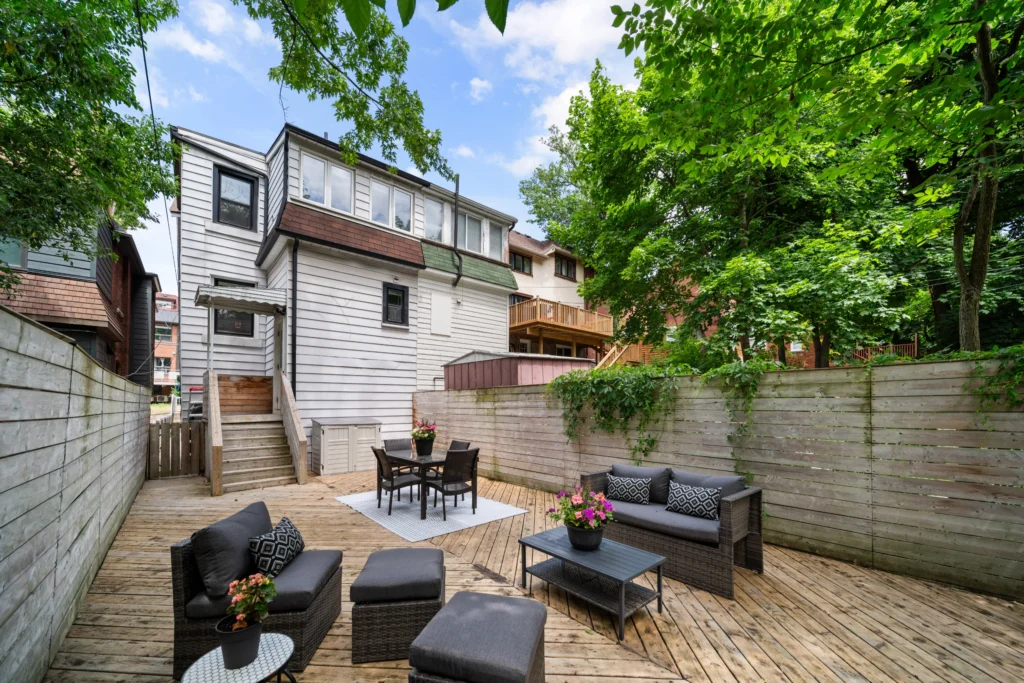What is Mortgage Porting and Should You Consider It?
10/06/25

Thinking of Moving? Here’s What to Know About Porting Your Mortgage
Buying a home is one step. Moving to another one is a different kind of challenge, especially in today’s market. In west-end neighbourhoods like Bloor West Village, Swansea, or Runnymede, rising home values and tight inventory mean that timing and financing have never been more important.
Higher interest rates, stricter lending rules, and fewer affordable options can make it hard to move, even for those who already own. Many homeowners are locked into a fixed-rate mortgage with terms that no longer match their life. Breaking the mortgage can come with big penalties, and applying for a new one may mean losing your original rate and terms.
Whether you’re relocating for work, upsizing for a growing family, or moving closer to schools or transit, it’s important to look closely at your current mortgage. One option that could save money and reduce stress? Porting your mortgage.
What Is Mortgage Porting?
Porting only works with the same lender. Your mortgage must be portable and meet your lender’s rules. You also need to requalify under today’s lending standards before you can move it.
Mortgage porting lets you transfer your current mortgage to a new home. You keep the same interest rate, balance, and remaining term. This can help you avoid breaking your contract and paying penalties.
Most lenders give between 30 and 120 days to complete the move. You must sell your current home and buy a new one within this window. Both closings must meet your lender’s timeline to qualify.
The process is not automatic. You must apply and get approval from your lender. They will review your income, debts, and credit before agreeing to the transfer.
In areas like the Junction Triangle or High Park, where prices are rising quickly, porting can help you keep a better rate than what is now available. This can lower your payments and make your next move more affordable.
Which Mortgages Can You Port?
Not all mortgages can be ported. Most fixed-rate mortgages include this feature. But some are marked as “restricted.” These offer a lower rate but fewer options, like no prepayment or porting.
Always check your mortgage documents before assuming you can port. If you’re unsure, ask your lender or mortgage broker.
Variable-rate mortgages usually can’t be ported. Some lenders allow it if you switch to a fixed rate first. But that change may come with added fees or a higher rate.
Your lender may also set rules about how much you can move. Some require the new mortgage to be equal to or greater than your current balance. Others ask you to requalify, even if your income has not changed.
If you’re buying a more expensive home, the lender may offer a blended rate for the new amount. But not all lenders allow this. Some require at least one year left on your term to blend rates.
If you’re buying a cheaper home, the unused part of your mortgage may count as a lump-sum payment. If your mortgage doesn’t allow prepayment, you could face penalties.
Homes in West-end Toronto often vary widely in price. Porting to a higher-value home in Runnymede or Baby Point may require a rate blend. Moving to a smaller home may trigger fees if the balance drops.
Porting is not just about forms. You need to understand your lender’s rules and how they apply to your situation.
Pros of Porting a Mortgage
You Keep Your Existing Rate and Terms
If you locked in a low rate, porting lets you keep it. You also keep your original mortgage features. This can include prepayment privileges or a longer amortization.
Many new mortgages come with fewer options. By porting, you may avoid giving up helpful features.
You Avoid Prepayment Penalties
Breaking a mortgage can cost thousands. Porting helps you avoid this, as long as the new mortgage is equal to or greater than your current one. The sale and purchase must also close within the porting window.
Some lenders still charge partial penalties if your new mortgage is smaller. Read the fine print or ask your lender before making a decision.
You Keep Lower Payments
If your current rate is below market, porting protects your monthly payments. Lower payments make budgeting easier. They also reduce the interest you pay over time.
Even a one percent difference can save tens of thousands over the life of a mortgage.
The Process Is Often Faster
Porting skips some steps of getting a new mortgage. You don’t need to negotiate a new deal from scratch. This can speed up the process and reduce paperwork.
Looking for more insights and helpful tips? Subscribe to get these delivered straight to your Inbox!
Cons of Porting a Mortgage
You May Miss Better Deals
Porting keeps you with your current lender. That means you can’t shop around. Other lenders may offer lower rates or better terms.
In some cases, it’s cheaper to break your mortgage and pay the penalty. This is more likely if the market has changed and rates have dropped.
Always compare your lender’s offer with what’s available elsewhere. A slightly better rate from another lender can save more in the long run.
Time Limits Are Tight
Most lenders give 30 to 120 days to port your mortgage. Your sale and purchase must both close within this window.
If your dates don’t line up, you may lose the chance to port. This can lead to penalties or delays.
In a slower or competitive market, this can be a real risk. Always check the timeline with your lender before listing or buying.
You’re Tied to the Same Lender
Porting offers stability but limits flexibility. You can’t switch to a lender with better service or features.
If your situation changes later, you may need to break your mortgage to make a change. This could mean penalties or new qualification rules.
Before porting, ask if your lender still meets your long-term needs.
FAQs About Mortgage Porting
Can I port a mortgage if I’m switching property types or moving to another province?
Usually not. Most lenders only allow porting between similar property types. For example, from one primary residence to another.
If you’re moving from a rental to a personal home, or leaving Ontario, you may not qualify. Some lenders may allow it with conditions, like more equity or a stronger financial profile. Always ask your lender before making any plans.
Can I change my amortization or loan structure when I port?
In most cases, no. Porting means you carry over your full mortgage contract. That includes your amortization, term, and payment schedule.
If you want to change to biweekly payments or shorten your term, you may need to break the mortgage and reapply. That could trigger penalties or higher rates.
What if my income or credit has changed since I first got the mortgage?
Most lenders reassess your finances when you port. Even if you’re not borrowing more, they may review your income, debts, and credit score.
If your income has dropped or your credit score has gone down, you may not qualify. Speak with your lender before selling or buying. Getting pre-approved for the port can help avoid surprises later.
What happens if my sale and purchase dates don’t match?
This is a common issue. Most lenders require both deals to close within a specific time frame.
If one deal is delayed, you may lose your right to port. Some lenders offer bridge financing, but not all. Always ask if your lender allows gaps between closings.
Plan for delays in competitive areas like Baby Point or Bloor West Village, where timing can be unpredictable.
Is porting a mortgage still a good idea if I plan to refinance soon?
Probably not. Porting locks you into the same mortgage. If you plan to refinance, you may be better off breaking the mortgage now.
That way, you can change your loan structure and shop for better rates. Weigh the cost of breaking your mortgage against the flexibility of refinancing.
Should You Port Your Mortgage?
Porting your mortgage can save money and protect a low rate. But it only works if your lender allows it, your finances still qualify, and your timelines line up.
It’s not the right move for everyone. If you’re planning to refinance or need more flexible terms, breaking your mortgage and starting fresh might make more sense.
Before you decide, talk to your lender. Ask clear questions about timing, fees, and qualifications. Compare what you’d save by porting versus switching lenders or changing your loan structure.
If you’re thinking about buying or selling in west Toronto, a local agent can help you plan the timing and details around your port. That includes how to line up closing dates and which lenders offer the most flexibility.
We’ve helped many homeowners in High Park, Swansea, and Bloor West Village move without losing their great mortgage rates. If you’re planning a move and want to talk through your options, call us at 416-769-6050 or contact us for more details.
Thinking of moving? Let's find out if porting works for you.
We’ve helped many homeowners in High Park, Swansea, and Bloor West Village move without losing their great mortgage rates. If you’re planning a move and want to talk through your options, The Smith Proulx Team is always happy to help.





